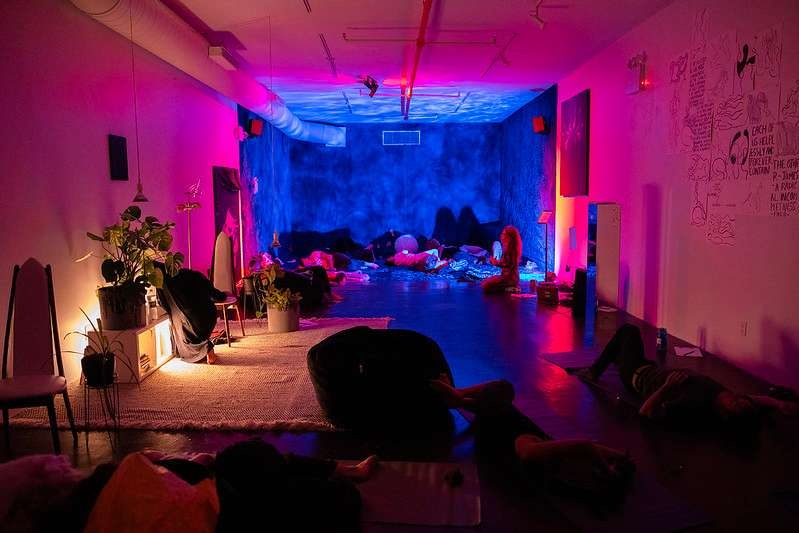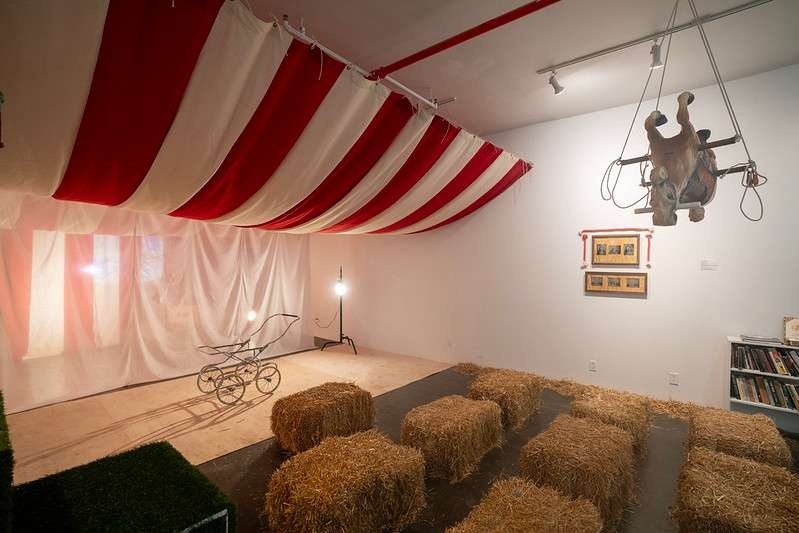Smita Sen’s artwork explores the role of informal caregiving, a term meant to encapsulate unpaid care by nonprofessionals, such as in-home assistance, palliative care, emotional labor or other healing work, most often taking place outside of the medical establishment and provided by friends or family. More specifically, Sen is concerned with the embodied and emotional experiences of care and caregivers, especially within the context of the healthcare system in the United States. Sen’s interest in informal care is both a restorative act, as informal care has historically been undervalued or under-recognized by the healthcare establishment, and a generative one, as her practice seeks to provide informal care. In the Manipura series, begun in 2018, Sen investigates informal caregiving through objects and installations created from the feelings and memories of caregivers and by offering care in community workshops. Manipura takes its title from the word for the belly chakra, a source of strength and associated with caregiving. Within her installation at Recess, Sen seeks to transform the space of the art exhibition in a space of spiritual and emotional nourishment.
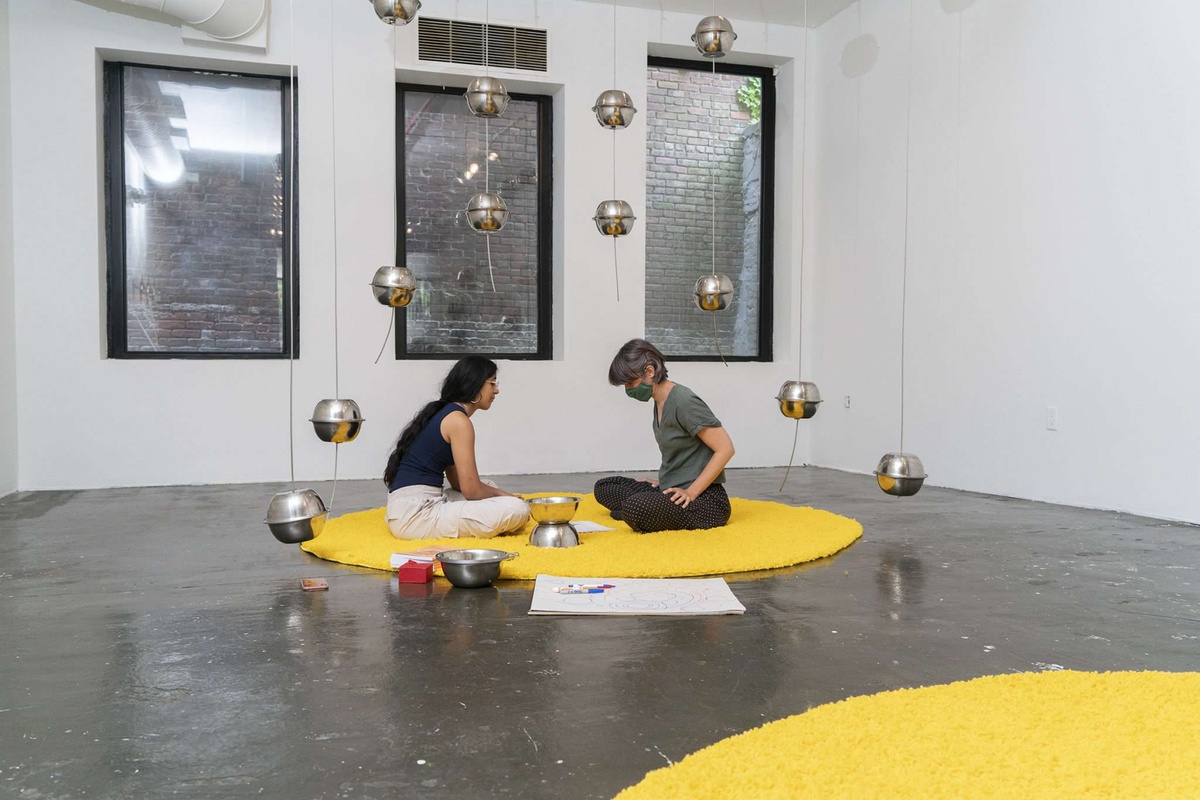

Artist Smita Sen leads a private guided meditation with a Recess visitor
The Manipura Sanctum transforms Recess’ gallery into a space for care through the installation of an altar. This primary altar is a semi-circular arrangement of silver mixing bowls filled with herbs and spices such as turmeric. The repetition of circular forms evokes Buddhist temple architecture and the artist’s own Hindu and Buddhist religious upbringing. As these bowls are commonly used for cooking, connecting to the gut (or manipura chakra) as a source of nourishment, they evoke another layer of care and well-being. Key to the transformation of Recess’ gallery will be Sen’s presence in the space throughout the run of the exhibition. Echoing community workshops like one she held at Bard College in 2018, Sen will interact with visitors, who will be able to mix and take home herbs, in addition to attending the artist’s performances and planned healing programming in the space.
Through this installation, Sen imagines a space for care that starkly departs from the characteristics of a hospital. In part stemming from her own personal experiences, the artist conceives of the hospital as a space devoid of warmth and plagued by the interminable noises of medical equipment; a place of limbo, somewhere between health, illness, life, and death. By contrast, Sen imagines Recess’ gallery as a space for healing based on interpersonal relationships and emotional care, invoking the meaning of sanctum as a sacred space for spiritual work.
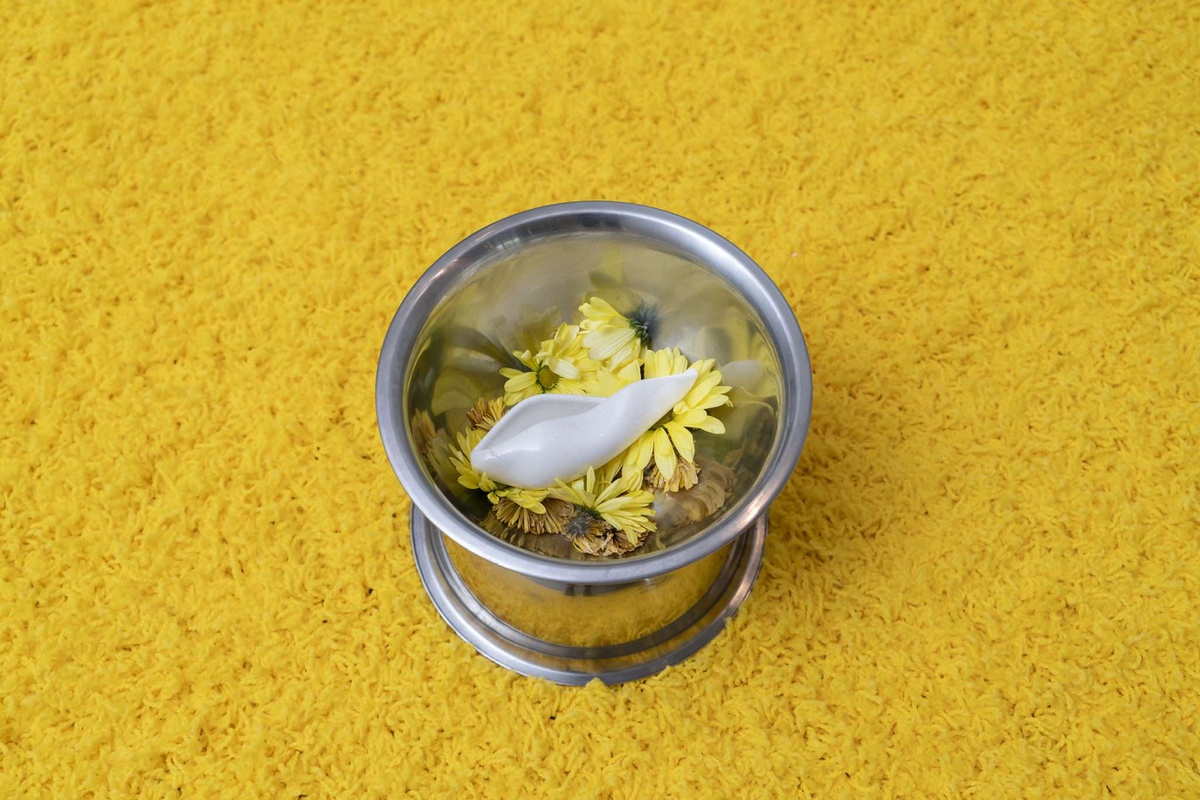

A metal mixing bowl filled with yellow flowers and a ceramic cast, resin-coated sculpture created by Smita
In the center of the space, Sen incorporates “fossil” sculptures that were designed in response to caregiver testimonies and meant to commemorate their experience in the form of physical objects. One, made in response to Vanessa’s testimony of living through trauma, is based on the buds of the Rhodiola Rosea, an Arctic herb that helps the body cope with stress. Rendered through 3-D printed vinyl and coated in resin, the two ovular buds look like porcelain or bone and read as skeletal structures or perhaps fossils of vestigial organs. These pseudo-organic objects imagine trauma/illness as a bodily or physical location where such experiences might be stored. Sen’s physical manifestations of memory propose ways of charting our embodied experience beyond the limitations of allopathic understandings of the body.
The progression of Sen’s engagement with care in her interdisciplinary artistic practice was profoundly affected by her own experience caring for her father during his diagnosis and treatment for a terminal illness. Sen’s father was a geologist, specializing in igneous petrology, studying some of the oldest rocks which emerge from volcanoes. His work imparted the lesson that geological time is not bound by the small brackets of human life but rather spans millennia of planets forming and being destroyed. If geological time measures on the macro scale of the formation and destruction of continents or planets, Sen’s works excavate bodily time—that fugitive space of emotions as they are felt, as they come and go, are remembered and forgotten. Bodily time can be fleeting or it can be slow. You can experience a feeling like a bolt of lightning, a flash of anger, or perhaps it is the slow burn of sadness, like silt settling at the bottom of a river or the way sediment builds in layers of rock.
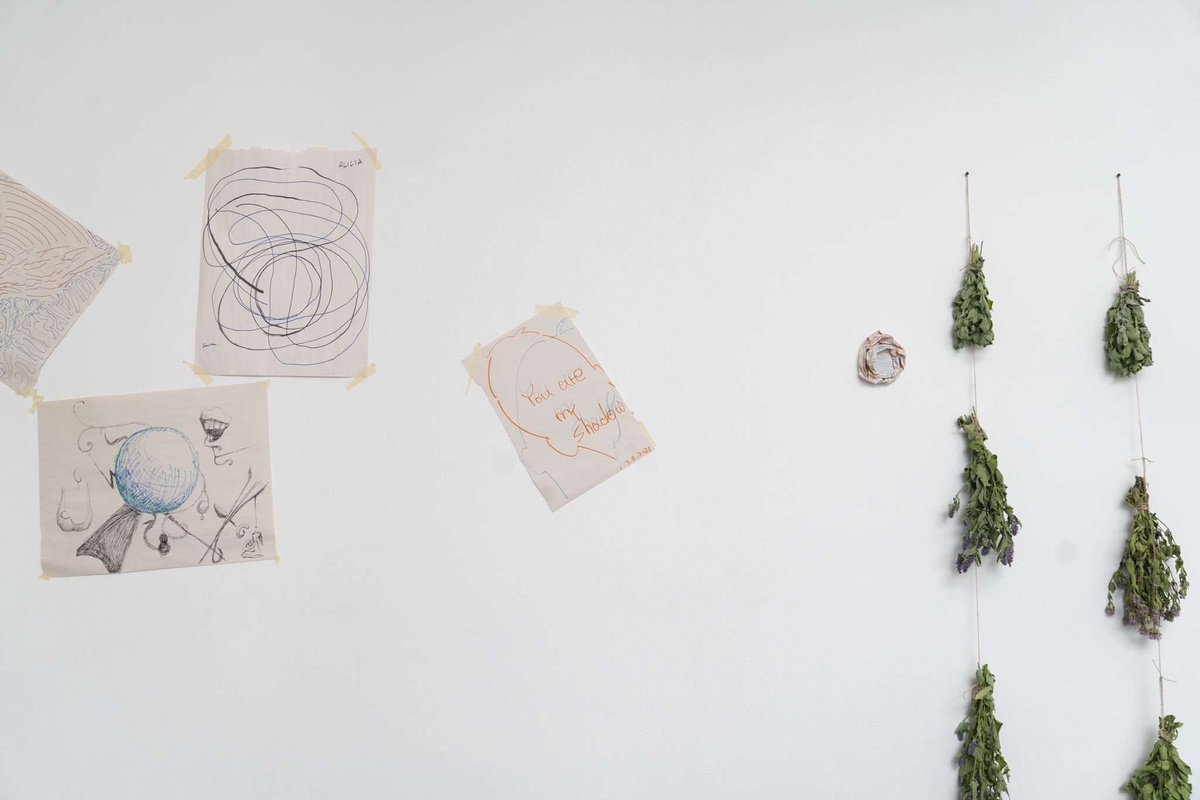

One of the gallery walls during Smita’s Session. On the left side are free association images produced by visitors. On the right side are dried medicinal herbs assembled by Smita as an offering for the public
These considerations of the body, illness, and time can be traced through Sen’s earlier works like The Body Drawings, a series of performances that took place from 2015 to 2016. Trained as a dancer, Sen is attuned to how emotions, experiences and ideas are conveyed through and stored in our bodies. In the performances conducted in her studio, Sen repeated at times physically taxing gestures, from pushing her body backward on her shoulders or scrubbing with her arms, which dispersed and rearranged the flour ground she had laid out beneath her. Sen specifically chose flour because of its associations with nourishment and homemaking. Monochromatic photographs of the resulting patterns in the flour document her gestures and index her bodily labor and movement, suggesting the structures of labor which underpin care or homemaking in the moonscapes of dust left behind.
In my own case, amongst memories of lost family members and times of hospice and hospitals, the day Sen and I had our first meeting, I received a call from a friend I had been out of contact with for two years. I listened to her describe caring for her mother, and my body was overtaken by a sensation of sadness and a kind of futility – being unable to fix her pain. The feeling, to my surprise, washed over me in a familiar way as a memory that long since drifted away snapped back.
We were 19 years old. My friend’s guttural shriek yanks me to consciousness as she stumbles into the room we shared sophomore year of college. Her arm hangs off her body in an off-kilter way, as if it is no longer snugly connected to her shoulder and only held to her body by the stubborn togetherness of her skin. The next day, diagnosed with a separated shoulder, she comes home from the hospital in immense pain and largely immobilized. In the mornings, I brush her hair before helping her into her bra after running to fetch her new pain medication in between studying for my midterms after laying on the floor of my friend’s apartment caught between crying, sleeping, and exhaling. I am angry when she rejects the food that I bring her, or I wince when she tries to hide her tears, or I laugh when we can’t get her shirt on right and it looks funny. I don’t have a place to put these feelings. They boil up inside of me, but over time, she gets better, her shoulder heals, and the feelings curl away in the dusty corners of my mind or evaporate inside my chest.
But can we really forget a feeling? Sometimes they re-emerge and overwhelm you once again. Sometimes those we take care of don’t get better. Sometimes we, the caregivers, don’t “get better.” Expanding our understanding of what caregiving might entail might push us beyond limiting binaries between sickness and health (wherein the goal is to always be in health). The Manipura Sanctum operates in this expanded space, asking questions like how can we memorialize care as action and felt experience? What structures of support might be possible for informal caregiving?
When I was in the position of having to provide physical care for my friend, I felt like I had little support and was alone in the experience, despite many friends around me. The hospital or traditional medical resources available to us were insufficient to truly care for my friend in her recovery. I and those around my friend had to step in to fill in the gaps, as my friend later did when caring for her mother, and as Sen and her family did when they cared for her father. In The Manipura Sanctum, Sen responds to the healthcare establishment’s gaps in care by creating social space centered around emotional care through actions like acknowledging caregivers’ testimony, sharing space with other visitors, or receiving care from Sen herself. Sen’s installation resonates deeply in our current moment, arriving as we all attempt to move forward from the depths of the pandemic and must ask ourselves in new ways how to care for our communities and give to those around us. The Manipura Sanctum reminds us that the work of emotional nourishment – of care – is tantamount to well-being and offers new possibilities for care as practice.
About the artist
Rachel Remick
Explore/Archive
See allDecember 2025
The INSTITUTE FOR TRANSHUMANIST CEPHALOPOD EVOLUTION and Learning from Octopuses
Barbara London
Barbara London reflect's of Miriam SImun's INSTITUTE FOR TRANSHUMANIST CEPHALOPOD EVOLUTION
October 2025
streamlined reflections, courtesy of noise canceling headphones
Gabrielle Rucker
Gabrielle Rucker reflects on the radical intimacy and auditory life at the heart of Deli Radio
July 2025
Tell My Jockey: CUNTRY’s Discourse From the Horse’s Mouth
Ericka Pérez
Assembly fellow Ericka Pérez reflects on clowning, resistance, and CUNTRY’s radical refusal to perform.
